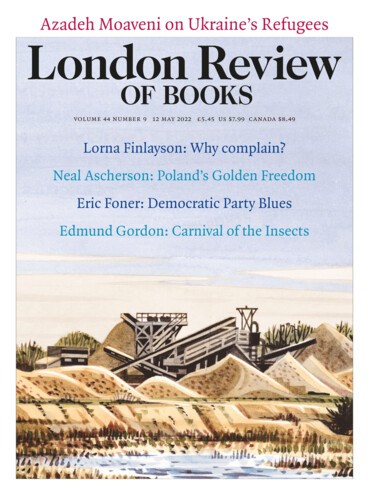Season One of Russian Doll, Netflix’s high-concept comedy about a woman who spends her 36th birthday dying over and over again, ends with Natasha Lyonne’s Nadia Vulvokov marching in a ghoulish Mardi Gras parade to Love’s ‘Alone Again Or’. The second series opens with her striding through the streets of New York accompanied by Depeche Mode’s ‘Personal Jesus’. (She’s a very good strider, all forceful bounce and hands thrust in pockets.) No time seems to have elapsed, but we soon discover it’s 2022 and Nadia is about to turn forty. The time warp effect, heightened by Nadia’s steampunk jacket and shaggy red hair, is multiplied in the funhouse mirror of the new season’s plot. But there’s a fine line between reflection and repetition.
Nadia strides into the subway, where she gets on a 6 train. There’s a poster advertising Sophie’s Choice. ‘What is this, some kind of, like, Eighties fle-ash mob?’ Lyonne rasps to the commuters. ‘All right. This is vurry effective. Vurr-y aff-ek-dive.’ Everyone ignores her: they’re all reading newspapers, not a phone in sight. When she snatches a paper from a yuppie she discovers she’s been transported back to 1982, the year of her birth.
In the first season, Lyonne, Amy Poehler and Leslye Headland, who created the show, seem to be experimenting as they go along. The structure is at once improvisational and careful. Nadia’s goals are simple: to find out what is happening to her and escape her groundhog nightmare. The reason for it all is important only insofar as it helps her unstick herself from the fuzzy end of time’s lollipop. The comedy mostly arises from the increasingly baroque methods of Nadia’s deaths – frozen stiff, crushed by an air-conditioning unit, stung to death by bees – and the predictable way she heaves back into consciousness in the black-tiled bathroom of her friend Maxine, who’s throwing her a birthday party, Harry Nilsson’s ‘Gotta Get Up’ thumping from the next room. In Season Two the writers allow Nadia more control: she has a return ticket to the present and goes back and forth more or less at will. This frees up space to concentrate on the purpose of her time-travelling: to recover her grandmother’s stolen gold and thus secure her own inheritance.
But, as Nadia works out and we all could have told her, altering the course of history isn’t as easy as she thinks. It’s unclear whether she is ignorant of or just doesn’t care about what her brother-in-timelines, Alan, describes as ‘all the time-travel stories about people accidentally obliterating themselves’. Still, it keeps the plot moving. Nadia criss-crosses space and time, going from New York to wartime Budapest. Meanwhile, she grapples with what her grandmother endured in Auschwitz (not onscreen, thankfully) and the effect it had on her schizophrenic mother (Chloë Sevigny, whom we last encountered in Season One having a psychotic episode with some watermelons). Maybe the real gold was the lessons we learned along the way.
Season One was closure-resistant and light on exposition. The Saturnalian procession at the end offered a wordless commentary on events; their split selves reunified, Nadia and Alan bounced off into the night, ready to exchange their never-ending present for an uncertain future. Nadia’s gold military buttons and Maxine’s millennial-hyperpop-meets-new-vintage look are still there in this series, as are the interiors straight out of How to Spend It. But style begins to take over from substance; instead of echoing the show’s puzzle-box quirks it threatens to swamp them. References to Lou Reed, Cheers, Douglas Hofstadter, quantum mechanics and Orson Welles jostle for attention. Swathes of plot are filled in through explanatory dialogue and Nadia’s muttered soliloquies as she pounds the streets. Alan is served a lukewarm side plot involving his Ghanaian grandmother, a sort of gay love story and the Berlin Wall. It all feels very hasty.
There are still plenty of laughs, mostly involving the 21st-century wisdom Nadia liberally dispenses to the video store owners, petty criminals and Guardian Angels of the 1980s Village (‘I’ve got a little tool … called the World Wide Web’). At moments of revelation or distress, Lyonne’s eyes stare out at the world like two great burn holes in a tissue. There’s a surprisingly joyous return to Maxine’s bathroom. But in the last few episodes it begins to run out of steam. Netflix can count on viewers’ loyalty – they certainly need the clicks – but before they rush into Season Three, Lyonne, Headland and Poehler should heed the lesson of their own show: resurrection is not always a good thing.
Send Letters To:
The Editor
London Review of Books,
28 Little Russell Street
London, WC1A 2HN
letters@lrb.co.uk
Please include name, address, and a telephone number.

